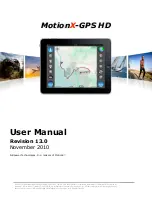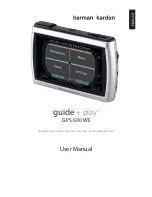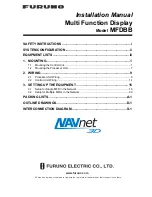23
3. If the arc of received signal is, say 30 degrees, note the bear-
ing of the “break” in signal (where the signal drops off) on
each side and choose the mid-point of the arc as the most
likely bearing to the transmitter.
4. With a compass record the bearing, then using the GPS
coordinates of the listening location, draw a line represent-
ing the bearing on a map. Add lines 10˚ on either side of
the initial line.
5. Repeat this procedure at 2 to 4 additional locations, plotting the
bearings that comprise the intersection of the lines on the map.
6. Determine the best path and commence the ground search.
The size of the search area may vary depending on terrain, radio
interference and other factors that impedes precise bearing.
Under most circumstances, an experienced user should be able
to define a bearing that is within 10 degrees of true. This will
result in a very small search area to undertake a thorough
ground search
Use from a Vehicle
The optional SMA connector (or bracket for older receivers),
omni directional antenna and 9 volt power adapter (for power
points or car cigarette lighters) can be employed to search for a
signal from a moving vehicle (assuming that interference is not
too great). This can be a time efficient approach if the exact loca-
tion of a transmitter is not known and a road network is avail-
able. Drive until a signal is heard and then remove the receiver
from the bracket, unfold the antennas and take a bearing. Be
careful to move away from the vehicle to minimize signal reflec-
tion. Once a signal is received, you can elect to triangulate on
the signal or follow the road network toward the source of the
signal, repeat as necessary or desired. The omni-directional
antenna will not provide signal direction data but a strengthening
signal will indicate that the vehicle is approaching the transmitter.


















